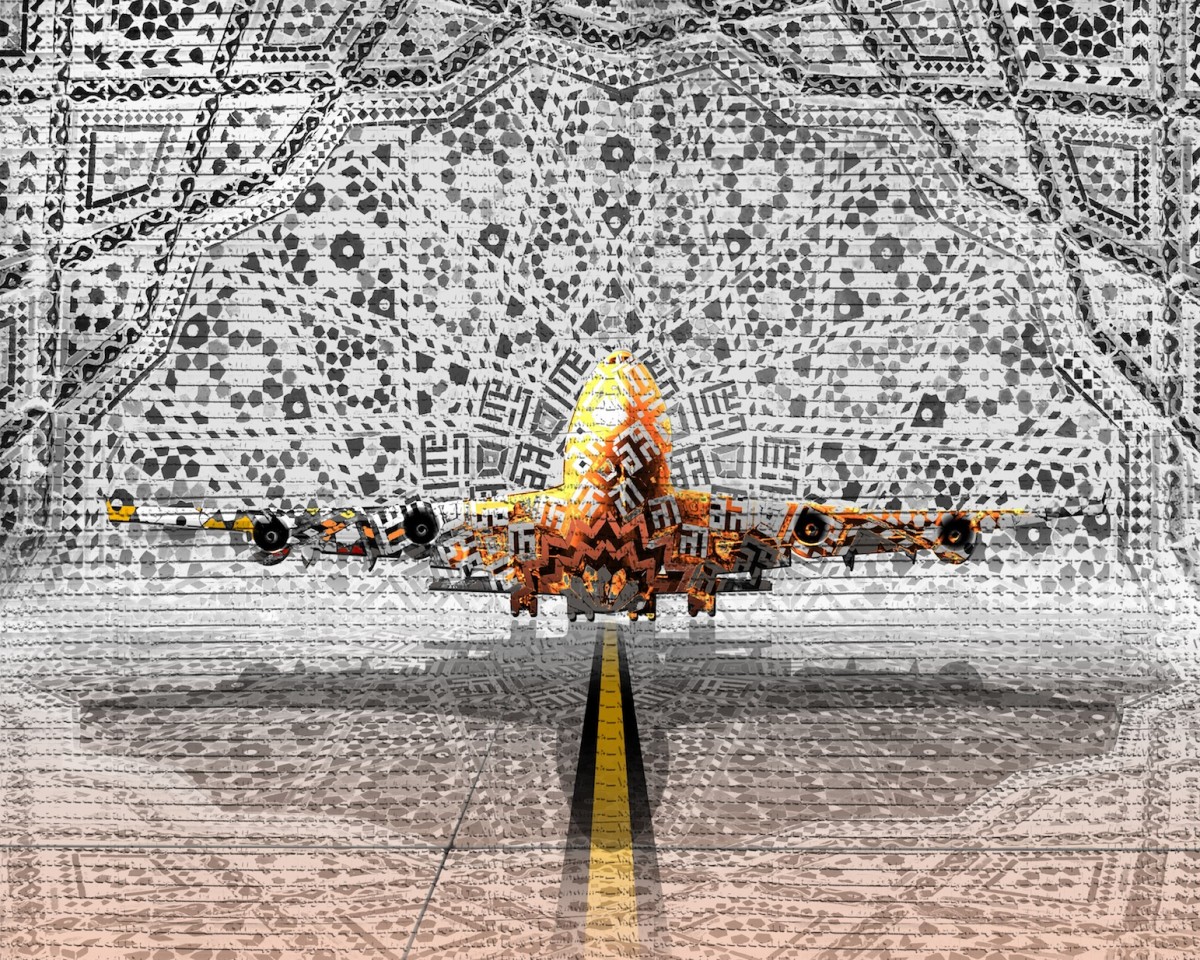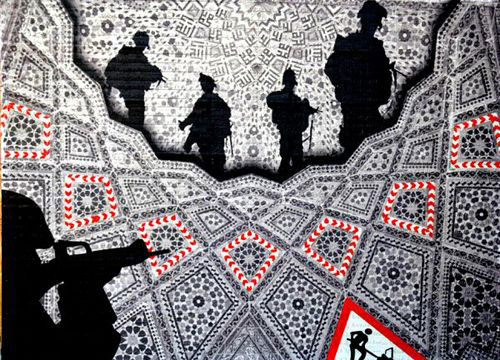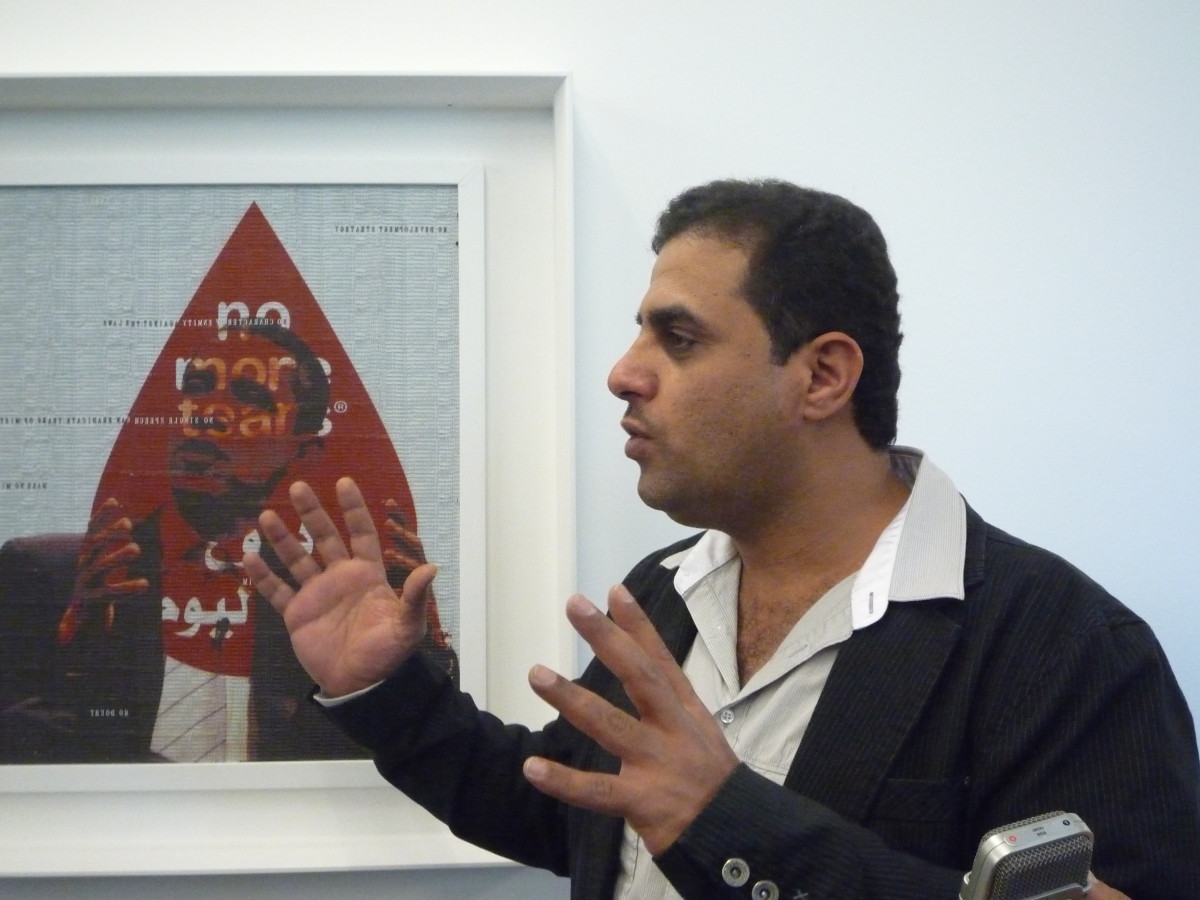Sabine B. Vogel: Your work Al Siraat looks like patterns on the street – what is this piece about?
ABDULNASSER GHAREM: In 1982 this valley was flooded after heavy rain. The villagers decided to get into safety on the bridge crossing the river – it was concrete and felt secure. They gathered on it with their belongings. But when the flood came the bridge collapsed and killed all the people. A new road was built. Both ends of the original bridge remain. Many years later, in 2007, I sprayed on the road to the old bridge repeatedly the words “Siraat“. It took us three days. It means “the path“ or “the way“ in the spiritual sense. It´s an important word not just to Muslims, who mention it thousands of times in prayer during their lives, their path. It means the choices you make in life, but also refers to the bridge over which every Muslim must pass on the day of Judgement. My performance Al Siraat also depicts an unoffical history, things that don´t get mentioned in the official books.
SBV: Did you do any other performance like this?
ABDULNASSER GHAREM: The same year I went to the district of Jizan, to a town where there are many poor people, and I found the poorest village there. The houses I could see had no roofs. On each house the word “Manzoa“ was sprayed. It means “evicted’, ‘removed’. All the houses in this village were about to be destroyed. The people there had been given money in return but they spent it on qat, an addictive narcotic. As they ran out of money they sold their roofs and the pipes to buy more qat. I decided to paint “Al Manzoa“ onto my shirt and I spent the day there with the people.
SBV: When did you decide to work with rubber stamps for paintings?
ABDULNASSER GHAREM: We use the rubber stamp countless times each day to validate the endless security documents, government orders and classified paperwork. My idea was to make a certain point but in a careful way – I don´t want to provoke clashes. Life is a kind of stamped contract from the moment you´re born. You have religion it´s a contract, you have a wife it´s a contract, between the countries there is a contract for trading, for tourism. Where and what are the choices we make in life, as individuals, as society? In 2008 I designed a huge stamp for the Edge of Arabia exhibition. The text said, roughly translated from Arabic, “have a bit of commitment“ and later “Amen“.
ABDULNASSER GHAREM: Some of my later paintings like No More Tears, Obama: No or Bad Signal but also In Transit are from the series Restored Behaviour. It is concerned with our understanding of and the relationship to the premise that we trust in ideas and structures that are presented as absolute, to safety and immovability, but also to bureaucracy and the authority of its process.
SBV: Why do you use patterns in some of your paintings?
ABDULNASSER GHAREM: It´s always related to the subject. Men at work is about tough things, about war. The arabesque here is related to the ceiling of a mosque where it is used traditionally. Now it´s a design and I use it as a message. Here it´s about the contrast between war and religion, about illusions. Soldiers are very aware of these contrasts.
SBV: In In Transit you use very sharp patterns – why?
ABDULNASSER GHAREM: Airplanes have been used as weapons throughout history. In this work I use Arabic words like Mohammad, Allah, and Ali, to represent Muslims, and a yellow line under the airplane to symbolize the ideological and actual paths that have become associated with air travel in recent times. This also reflects my earlier performance and work The Path/Al Siraat, which asks us about the choices we make in life; whether we as individuals, as cultures, as societies, are following a straight path, or whether we trust in a path at all.
Answers from a phone conversation with the artist in April 2011, from Henry Hemming on Adulnasser Gharem, November 2008, in: www.universes-in-universe; Adam Grundey, March 2011, in: The Rolling Stone
Interview for the catalogue of „Political Patterns“, ifa Gallery Berlin, Stuttgart, 2011. curated by Sabine B. Vogel


